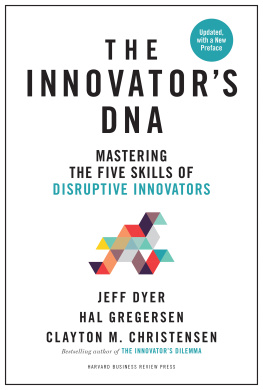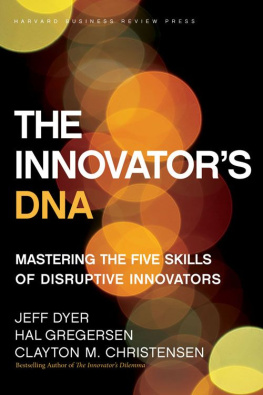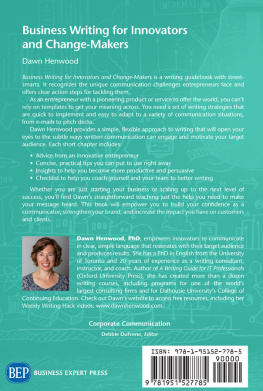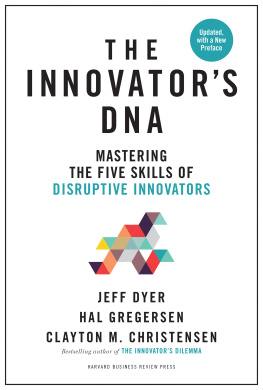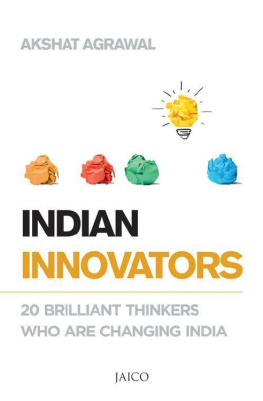Yukio Ohsawa - Innovators marketplace: using games to activate and train innovators
Here you can read online Yukio Ohsawa - Innovators marketplace: using games to activate and train innovators full text of the book (entire story) in english for free. Download pdf and epub, get meaning, cover and reviews about this ebook. City: Berlin;Heidelberg, year: 2014, publisher: Springer, genre: Computer. Description of the work, (preface) as well as reviews are available. Best literature library LitArk.com created for fans of good reading and offers a wide selection of genres:
Romance novel
Science fiction
Adventure
Detective
Science
History
Home and family
Prose
Art
Politics
Computer
Non-fiction
Religion
Business
Children
Humor
Choose a favorite category and find really read worthwhile books. Enjoy immersion in the world of imagination, feel the emotions of the characters or learn something new for yourself, make an fascinating discovery.
- Book:Innovators marketplace: using games to activate and train innovators
- Author:
- Publisher:Springer
- Genre:
- Year:2014
- City:Berlin;Heidelberg
- Rating:5 / 5
- Favourites:Add to favourites
- Your mark:
- 100
- 1
- 2
- 3
- 4
- 5
Innovators marketplace: using games to activate and train innovators: summary, description and annotation
We offer to read an annotation, description, summary or preface (depends on what the author of the book "Innovators marketplace: using games to activate and train innovators" wrote himself). If you haven't found the necessary information about the book — write in the comments, we will try to find it.
Yukio Ohsawa: author's other books
Who wrote Innovators marketplace: using games to activate and train innovators? Find out the surname, the name of the author of the book and a list of all author's works by series.
Innovators marketplace: using games to activate and train innovators — read online for free the complete book (whole text) full work
Below is the text of the book, divided by pages. System saving the place of the last page read, allows you to conveniently read the book "Innovators marketplace: using games to activate and train innovators" online for free, without having to search again every time where you left off. Put a bookmark, and you can go to the page where you finished reading at any time.
Font size:
Interval:
Bookmark:
- A change that creates a new dimension of performance. (Peter Drucker, management consultant and social ecologist)
- A new element introduced in the network which changes, even if momentarily, the costs of transactions between at least two actors, elements or nodes, in the network. (Regis Cabral, technology management scientist)
- The three stages in the process of innovation: invention, translation, and commercialization. (Merrifield )
- An invention is an idea, a sketch or model for a new or improved device, product, process, or system . An innovation in the economic sense is accompanied with the first commercial transaction involving the new product, process, system or device, although the word is used to describe the whole process. (Freeman )
- The ability to deliver new value to a customer. (Campos )
- The way of transforming the resources of an enterprise through the creativity of people into new resources and wealth. (Schumann )
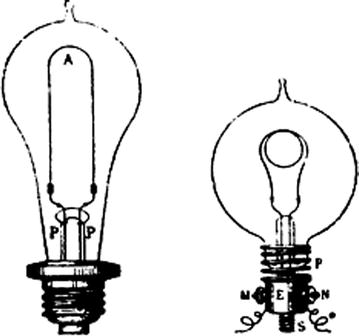
Font size:
Interval:
Bookmark:
Similar books «Innovators marketplace: using games to activate and train innovators»
Look at similar books to Innovators marketplace: using games to activate and train innovators. We have selected literature similar in name and meaning in the hope of providing readers with more options to find new, interesting, not yet read works.
Discussion, reviews of the book Innovators marketplace: using games to activate and train innovators and just readers' own opinions. Leave your comments, write what you think about the work, its meaning or the main characters. Specify what exactly you liked and what you didn't like, and why you think so.




